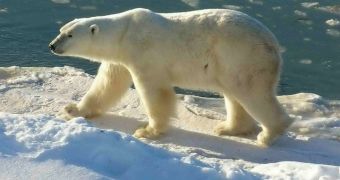In a recently-published investigation, researchers paint a bleak picture for the polar bear. The new computer model, which is the first to use all available data on the animals to model their chances of reproduction and survival, shows that global warming and climate change will affect the number of bears steeply and dramatically. The simulation uses available data on the creatures' behavior, ecology and physiology to calculate how many new bears will be born, and how many existing ones will be able to find food during ice-free seasons. The numbers don't look encouraging at all, experts say.
In the past, studies on polar bears were conducted using the “mark and recapture” method, which basically implies tagging a bear, and then continuously catching and studying it again over the years. But applying this technique is very dangerous, takes a lot of time, and is also very expensive. An additional negative side-effect is the fact that the information record scientists gather on the animals varies significantly from one research to the next, which makes it difficult to figure out the true extent of the bears' predicament, the BBC News reports. Furthermore, while some areas have been extensively surveyed, others (such as large parts of Russia) have been left to chance.
“Some populations are expected to go extinct with climate warming, while others are expected to persist, albeit at a reduced population size,” explains University of Alberta scientist Dr Peter Molnar, who has been studying polar bears for many years. “So we've looked at the underlying mechanisms of polar bear ecology to assist our understanding of what will happen in a warming world,” he adds, saying that calculating polar bears' chances of survival and reproduction used to be a very tricky business. Researchers from the University of Alberta and the York University also collaborated in the new study.
“We developed a model for the mating ecology of polar bears. The model estimates how many females in a population will be able to find a mate during the mating season, and thus get impregnated,” the scientists write in the latest issue of the esteemed scientific journal Biological Conservation. They add that one of the main methods male bears use to find females – discovering tracks and then following them – could become useless as ice fragments and covers up the trails. As “the climate warms, we may not see any substantial effect on polar bear reproduction and survival for a while, up until some threshold is passed, at which point reproduction and survival will decline dramatically and very rapidly,” Molnar concludes.

 14 DAY TRIAL //
14 DAY TRIAL //